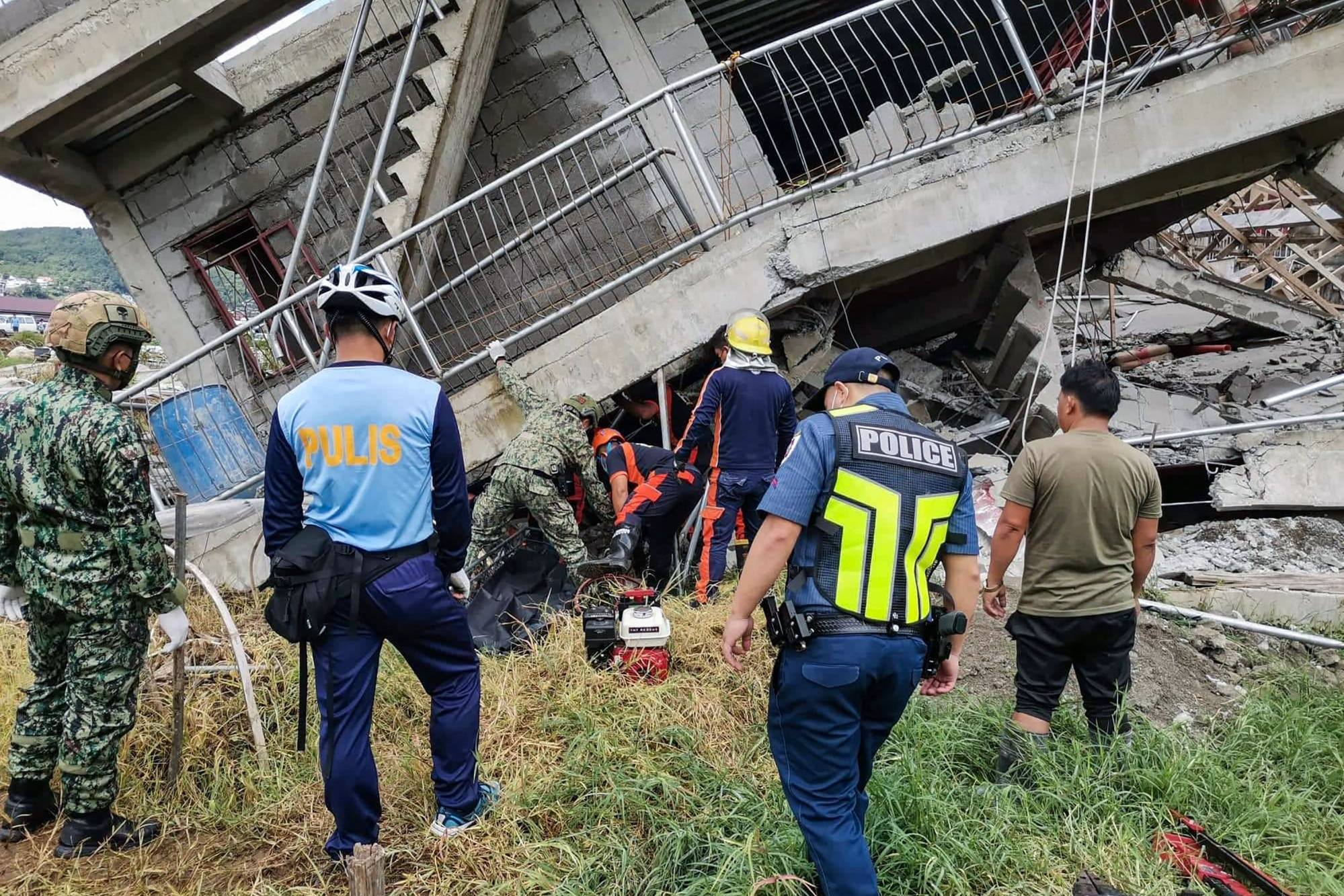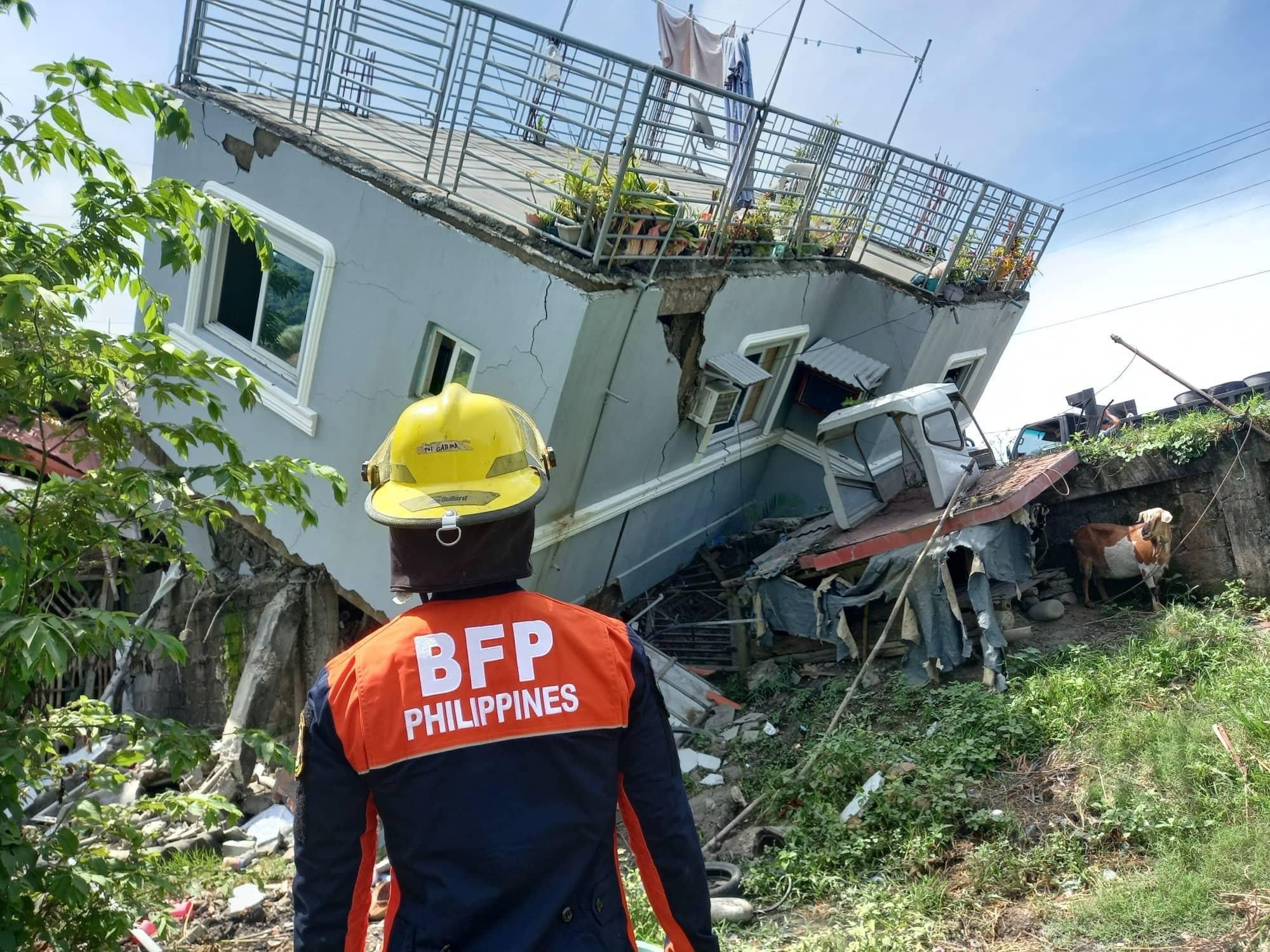
Powerful 7-magnitude earthquake strikes the Philippines, killing at least 5
- A hospital and other buildings in the northern Abra province were badly damaged, with strong tremors sent through the capital Manila
- Two people were killed in Benguet province, one in Abra province, one in Kalinga and another in Cagayan Valley
“Despite the sad reports about the damages caused by the earthquake, we are assuring quick response to those in need and affected by this calamity,” Marcos Jnr said on Facebook.
“The ground shook like I was on a swing and the lights suddenly went out. We rushed out of the office, and I heard screams and some of my companions were in tears,” said Michael Brillantes, a safety officer in the Abra town of Lagangilang. “It was the most powerful quake I’ve felt and I thought the ground would open up.”
Two people were killed in Benguet province, one in Abra province, one in Kalinga and another in Cagayan Valley.
In the municipality of Dolores in Abra, which felt the full force of the quake, terrified people ran outside their homes and shops. A hospital in the province was evacuated after the building partially collapsed following the quake, but there were no casualties reported, said officials.
Abra governor Joy Bernos posted photos of the damaged hospital on her Facebook account which showed a gaping hole in the front entrance facade. Other photos showed hospital beds, including one with a patient, wheeled across the road and hospital staff being evacuated.
“We are still experiencing aftershocks. We have received reports of damages to houses. But so far no casualties,” said Lagangilang Mayor Rovelyn Villamor.
“We don’t have power supply because that’s automatically cut off due to danger,” Villamor told DZRH radio.

The quake’s strength was lowered from an initial 7.3-magnitude after further analysis. It was set off by movement in a local fault at a depth of 25km (15 miles), the Philippine Institute of Volcanology and Seismology said.
Renato Solidum, head of the state seismology agency, told DZRH radio station that more strong aftershocks were expected.
The earthquake lasted 30 seconds or more. I thought my house would fall
“The focus of attention is on Abra and nearby provinces. This is a major earthquake,” Solidum said, adding that landslides had been reported in some parts of Abra, particularly in the town of Manabo.
Abra, home to nearly 250,000 people, is a landlocked province in the northern Philippines. Its deep valleys and sloping hills are enclosed by rugged mountains.
Eric Singson, a congressman in Ilocos Sur province, also in the north, told DZMM radio station the quake had been felt strongly there.
“The earthquake lasted 30 seconds or more. I thought my house would fall,” said Singson.
“Now, we are trying to reach people … Right now there are aftershocks so we are outside our home.”

The quake was also felt in Manila where several buildings were evacuated, with some people forced to flee from the 30th floor of one building, and the city’s metro rail systems were halted at rush hour.
The Philippines is prone to natural disasters and is located on the seismically active Pacific “Ring of Fire”, a band of volcanoes and fault lines that arcs round the edge of the Pacific Ocean.
String of earthquakes raises fears ‘the Big One’ is about to hit Japan
A 7.1-magnitude quake that killed more than 220 people in the central Philippines in October 2013 was the last major quake to hit the country.
In July 1990, more than 2,400 people were killed on the northern island of Luzon in a 7.8-magnitude earthquake, one of the strongest ever to hit the Philippines.
Additional reporting by Associated Press, Agence France-Presse, dpa


